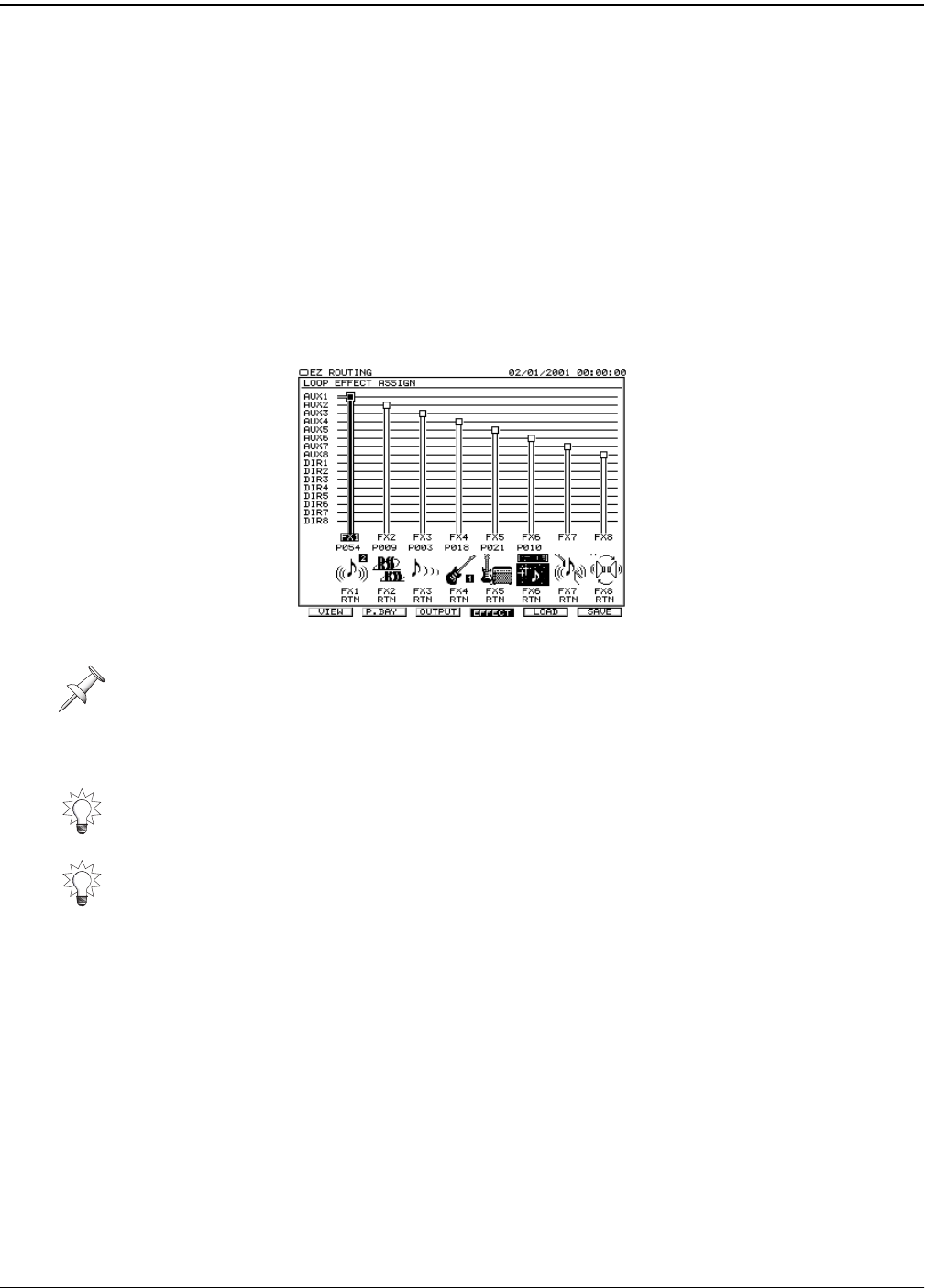
15—The Aux and Direct Busses
210 www.rolandus.com Roland VS-2480 Owner’s Manual
Aux Bus/Direct Bus Strategy
Sending Signals to Internal Effects
As shipped from the factory, Aux Busses 1-8 are routed to the VS-2480’s internal effects
so that you can send multiple input, track or FX return channel signals to any internal
effect. However, if you just want to send one signal to an effect—thus freeing up an Aux
bus—you can send it to the effect on a Direct bus.
Routing Aux and Direct Busses to Internal Effects
1. Press EZ ROUTING.
2. If “EFFECT” doesn’t appear above F4, press PAGE until it does.
3. Press F4 (EFFECT). The LOOP EFFECT ASSIGN screen appears.
4. Press
and/or
to select an internal effect.
5. Turn the TIME/VALUE dial to select the Aux or Direct bus you want to use for
sending signals to the selected effect.
Sending Signals to External Devices
Both Aux and Direct busses can carry signals to the VS-2480’s outputs on their way to
an external device. Here again, any time you’re sending a single signal, use a Direct bus
so as not to use up your more-powerful Aux busses.
Sending Signals to Tracks
If you wish to, you can route Aux and Direct busses directly to VS-2480 hard disk
recorder tracks. With Aux busses, you can use the same Quick Routing method you use
for input channel signals (Page 172). You can also use EZ Routing (Chapter 23) to route
both Aux and Direct busses to tracks.
If the VS8F-2 card required for an effect processor hasn’t been installed in your
VS-2480, the screen shows “No FX Board” for that effect.
You can change the factory default assignments of Aux Busses 1-8 to Effects 1-8 if some
other arrangement is more convenient for you.
You can route the same Aux or Direct bus to multiple effects in order to save busses.
While those effects will all have the same input levels, you can adjust each effect’s
output level to create the desired balance between the effects.
VS2480OMUS.book 210 ページ 2006年2月7日 火曜日 午後4時16分


















